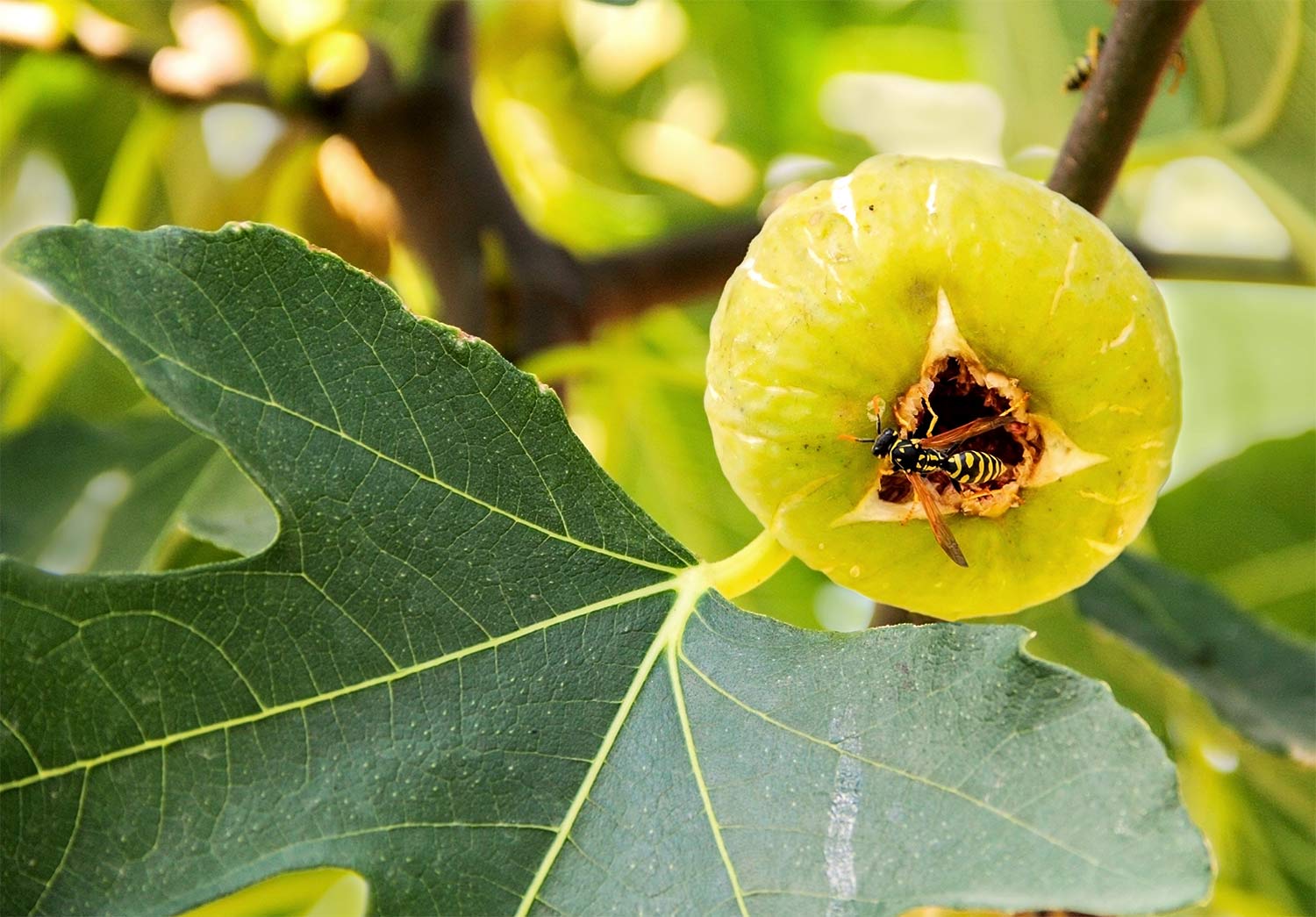
The name fig in Korean literally means “fruit without a flower.” But in truth, no fruit in the world can grow without a flower. What looks like a small green fruit before a fig ripens is actually a flower in disguise. As the flower base and stalk grow, they form what we recognize as the fruit. So when a fig is ripe, the outer skin is actually the flower’s calyx, and the soft red flesh inside is the part that corresponds to the flower itself. Because fig flowers don’t look like typical flowers, the fig was given a name that suggests it has no flower.
Since plants cannot move on their own, they usually rely on the wind or insects to spread their pollen. But figs are different; their flowers bloom inside the fruit, hidden away. That means the wind cannot help, and not just any insect can do the job. Only one insect is up to the task: the tiny fig wasp.
The fig wasp enters the fig through a small opening and lays its eggs inside. The larvae hatch, grow safely within, go through their life stages, and mate before leaving the fig. Covered in pollen, the wasps fly off to find another fig to enter, and in doing so, they help pollinate the fig tree. While the fig wasp plays a crucial role in the fig’s pollination, the fig tree provides a safe haven for the wasp’s young to grow.
In this way, the fig tree and the fig wasp are inseparably linked, each depending on the other for survival. It’s a beautiful example of nature’s harmony—two very different lives, working together in perfect partnership.